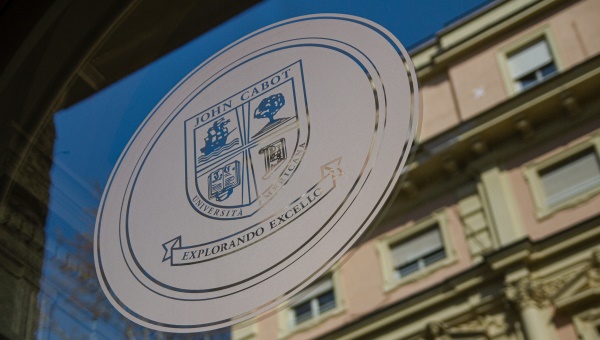Professor Lila Yawn to Present at Middle Ages in the Modern World Conference
John Cabot art history professor Lila Yawn is going to present a paper at the conference “The Middle Ages in the Modern World,” to be held from June 25-28, 2013 at the University of St. Andrews, Scotland. The conference was organized to celebrate the six hundredth anniversary of the founding of the University of St. Andrews.
Here is an abstract of Professor Yawn’s paper, entitled “Assisi’s Calendimaggio and Its Fascist Founder:
Each year for three days in early May the central-Italian hill town of Assisi returns to the Middle Ages. Lamp posts are hooded in burlap. Shop signs are covered with hand-painted placards written in Latin or in a vernacular idiom approximating that of St. Francis of Assisi. The mayor ceremonially turns the keys of the city over to a maestro de campo, and at night designated areas of the historic center are closed off and thoroughly medievalized—lit with torches, strewn with hay, populated with live farm animals and scenes of medieval life, and made off limits to anyone in modern dress. During the day, many dozens of the city’s inhabitants, from retirees to infants, also dress in medieval style and participate in pageants, games, and concerts that pit the parte de sotto, the lower part of the city, against the parte de sopra, the upper town.The festivities culminate in the awarding of a palio to one side or the other by an international panel of judges expert in medieval history and musicology.
Presented as a medieval usage rooted simultaneously in medieval spring celebrations and in a protracted feud between the Nepis and Fiumi families and their factions that erupted in Assisi in the 1300s, this festival of ‘Calendimaggio’ (the Kalends of May) was founded in 1927 by Arnaldo Fortini, a local historian and lawyer later famous for his successful defense of the Fascist syndicalist Tullio Cianetti and for twenty years (1923-1943) Assisi’s mayor or, more accurately, its podestà—in 1926 Mussolini’s senate had decided to reinstitute the medieval term.This paper will consider the political and cultural circumstances that surrounded Fortini’s first Calendimaggio, including his founding of the Compagnia dei Cavalieri di Satriano and his organization in 1926 of the mega-celebration for the seventh hundredth anniversary of the death of St. Francis of Assisi, a saint co-opted by the Fascists as a national symbol. In a second, briefer section the paper will also examine the subsequent history of Calendimaggio, including its revival after World War II, its shifting political overtones and gradual commercialization, and its role in keeping an Assisian identity alive, even with the severe depopulation and resettlement in surrounding areas that took place after the earthquakes of 1997-1998.





